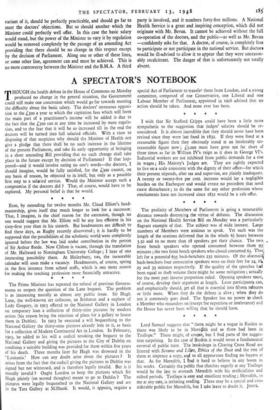The Prime Minister has repeated the refusal of previous Govern-
ments to reopen the question of the Lane bequest. The problem is as interesting morally as almost any public issue. Sir Hugh Lane, the well-known art collector, an Irishman and a nephew of Lady Gregory, in 1913 offered to the National Gallery in London on temporary loan a collection of thirty-nine pictures by modern artists (his reason being the rejection of plans for a gallery to house them in Dublin). In 1913 he executed a will bequeathing to the National Gallery the thirty-nine pictures already lent to it, as basis for a collection of Modern Continental Art in London. In February, 1915, he added to his will a codicil revoking the bequest to the National Gallery and giving the pictures to the City of Dublin on condition a suitable building was provided for them within five years of his death. Three months later Sir Hugh was drowned in the Lusitania.' How can any doubt arise about the pictures ? It arises from the fact that the codicil giving the pictures to Dublin was signed but not witnessed, and is therefore legally invalid. But is it morally invalid ? Ought London to keep the pictures which Sir Hugh plainly (on second thoughts) meant to go to Dublin ? The pictures were legally bequeathed to the National Gallery and are in the Tate Gallery at Millbank. It would, it appears, require a special Act of Parliament to transfer them from London, and a strong committee, composed of one Conservative, one Liberal and one Labour Member of Parliament, appointed in 1926 advised that no action should be taken. And none ever has been.


































 Previous page
Previous page